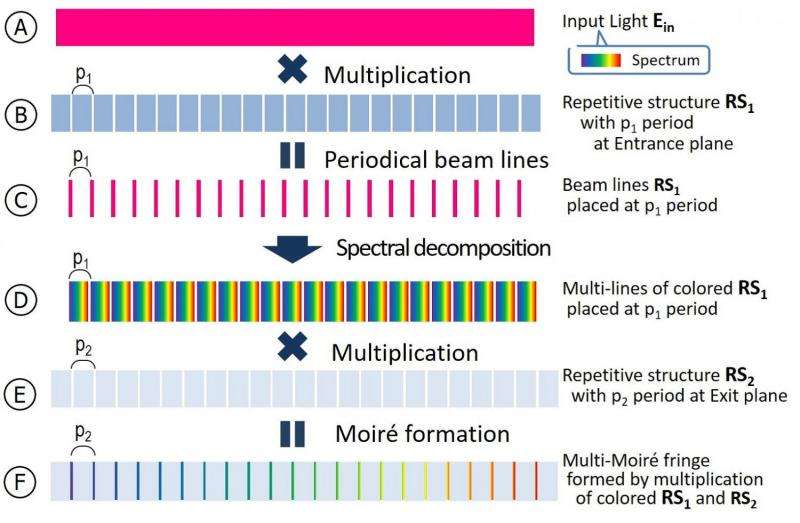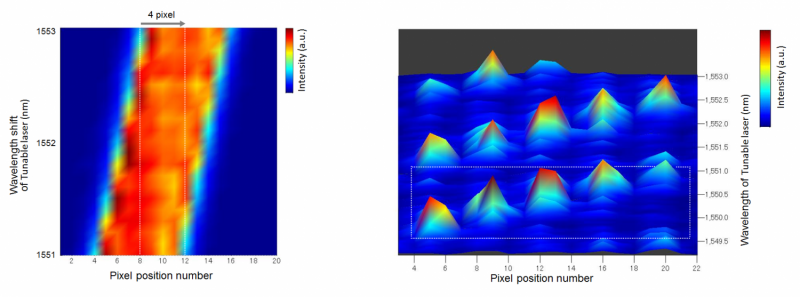Super-resolution spectral imaging to monitor dynamic processes in real time

Spectroscopy is the study of the interaction between light and matter, offering numerous important applications in fields ranging from materials science to astronomy. A common goal of spectroscopy is improved spectroscopic resolution to provide more detailed information about dynamic processes. Multichannel spectrometers are widely used in spectroscopy because they are compact, strong, and capture high-speed images. However, the resolution of multichannel spectrometers is limited. Improvement of this resolution is currently restricted by the inability to make the entrance slit width smaller than the pixel size; known as the "pixel Nyquist limit."
Researchers at Osaka University recently developed a way to increase the resolution of multichannel spectrometers beyond the pixel Nyquist limit using Moiré patterns. A Moiré pattern is an interference pattern created between two similar overlapping patterns with slightly different pitch, displacement, or rotation.
"We used the Moiré effect to enhance the spectral resolution in a multichannel spectrometer," says Tsuyoshi Konishi, lead author of the recently published report on the study. "This allowed us to achieve resolution beyond the pixel Nyquist limit in a multichannel spectrometer for the first time."

The team created the Moiré effect in a commercial multichannel spectrometer using a pair of slit arrays with periods of 100 and 180 μm positioned at the entrance and exit of the spectrometer. The overlap of the patterns from the pair of slit arrays created a Moiré fringe. The image sensor of the spectrometer had a pixel Nyquist limit of 50 nm, so the resolution needed to be smaller than this value. The Moiré fringe generated by the modified spectrometer was able to resolve a wavelength change of just 0.31 nm, overcoming the pixel Nyquist limit. This means that the spectral resolution of the spectrometer was improved by a factor of more than ten from its original resolution of 4.63 nm.
The approach was tested using both a single-wavelength light source and a polychromatic light source consisting of two laser beams of different wavelength. In both cases, the generated Moiré fringe provided resolution beyond the pixel Nyquist limit. Importantly, the developed approach is simple and can be adapted to suit various situations.
"Overcoming the pixel Nyquist limit of a multichannel spectrometer using the Moiré fringe generated by a pair of appropriately positioned slit arrays should facilitate super-resolution imaging of dynamic processes," Konishi explains. "We envisage that multichannel spectrometers with variable spectral resolution will be developed based on this concept."
This research represents an important step toward the goal of real-time high-resolution monitoring of dynamic events in fields ranging from biology to astronomy.
More information: Tsuyoshi Konishi et al. Super spectral resolution beyond pixel Nyquist limits on multi-channel spectrometer, Optics Express (2016). DOI: 10.1364/OE.24.026583
Journal information: Optics Express
Provided by Osaka University




















